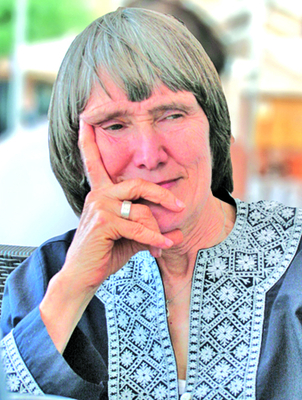One-Minute Book Reviews: A novel that challenges the rules and takes a chance
“Way Out West”
Wyn Cooper, Concord ePress, 2022.
Wyn Cooper is well known as a writer of short stories, essays, reviews, and five books of poetry. Behind this steady-seeming career there lurks an artist willing to take a chance. Most notably, Cooper’s the guy who, when asked by Sheryl Crow if she could use his poem “Fun” in one of her songs, said yes—and watched it top the charts in 1994 as “All I Wanna Do.” It’s this side of Cooper that has taken the chance of publishing “Way Out West,” a spirited, unorthodox novel that is … well, way-out. Everything in the book challenges the unspoken rules of novel-writing—except the masterful sleight of hand of Cooper’s prose, which makes readers trust him so completely that they ignore all the improbabilities on the pages they’re turning, and attribute their occasional confusion to the eagerness with which they’re reading.
“Way Out West” opens in December 1983 with a portrait of Tyler Dutton, a movie technician and stunt man who has drunkenly climbed one of the Deep Creek Mountains by moonlight. From this beautifully described vantage point, he somehow tumbles and slides down the mountain and is walking along a nighttime road when he is hit by Robin Stanley, a beautiful woman who has moved to Baker, Nevada, in order to recover from years of drug addiction. Robin brings Tyler to her house, and the next day, over mugs of Irish coffee, he finds she’s the city girl he’s been waiting for all his life. (“He knew she was a city girl when she lifted him into the truck last night, one hand on his crotch.”) Thus begins an unlikely romance, lubricated by constant drinking but, with one almost fatal exception, no drugs. Lending structure to the plot is the movie Tyler has walked away from making—a grade B “end-of-the-earth-as-we-know-it” movie being filmed in Utah’s salt flats and the Nevada National Security Site, with a final scene in Paolo Soleri’s visionary Arizona town Arcosanti. As the novel starts, the movie is only half-filmed; and concerned by the loss of Tyler, the director sends him a letter asking him to come back at double his salary. Tyler is still considering this the next day when the producer, Hal Lockhart, pulls up to Robin’s house in a stretch limousine, informs Tyler that the director has died of a heart attack, and offers him the job. Tyler accepts, and the book moves from set to set, concluding in Mercury, Nevada (“where the bombs are”).
The cinematic action is reflected in Cooper’s cinematic organization. The story proceeds in a series of scenes, sometimes with flashbacks, often with witty or confrontational dialogue, but with little exposition. The scenery is set-like: Cooper’s chosen Western landscape is, in a larger world, the set for the nuclear tests of Ronald Reagan’s “Star Wars.” Though cinematic emphasis successfully leads readers into what for some pages promises to become a spy story, the sets themselves are sometimes moved about in ways that belie geographical accuracy, particularly in conversation-filled car rides along highways impossibly placed on the wrong side of the Nevada-Utah border. But as with similar scenes in movies, “feel” is more important than accuracy: it’s the driving and the conversations that entertain. And Cooper’s scenes do entertain. Many are comic, particularly those featuring the bartender Sonny and his oppressive mother, or the sex-obsessed Hal Lockhart. The unnamed movie, like the romance, progresses reasonably well under Tyler’s guidance, despite the looming threat of nuclear explosions. How will it all end? Happily? Tragically? (There’s ample reason to think so, as at least one of two characters who die is murdered.) Readers wonder, but Cooper defeats all the expectations of standard novelistic fare by taking the most daring chance of all on his concluding page.



